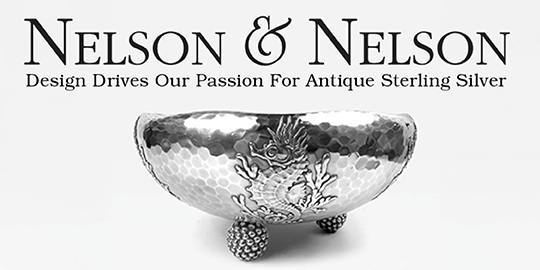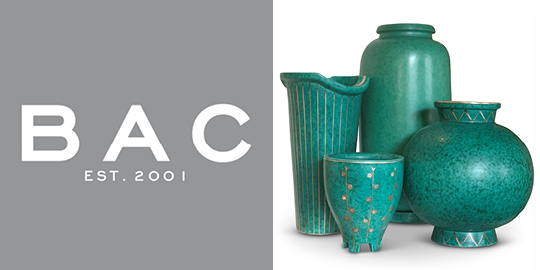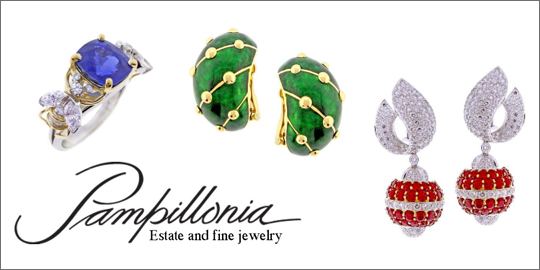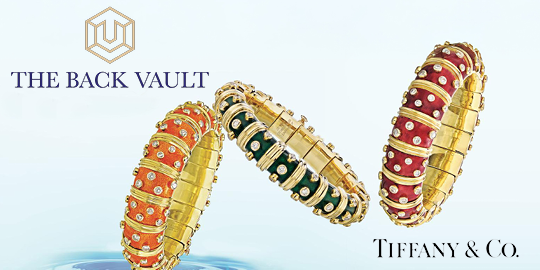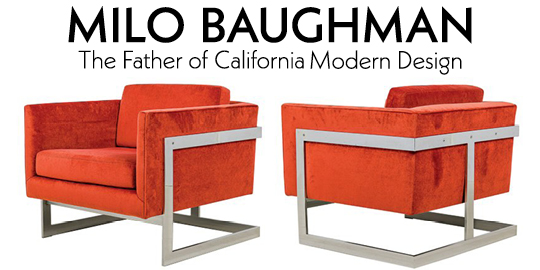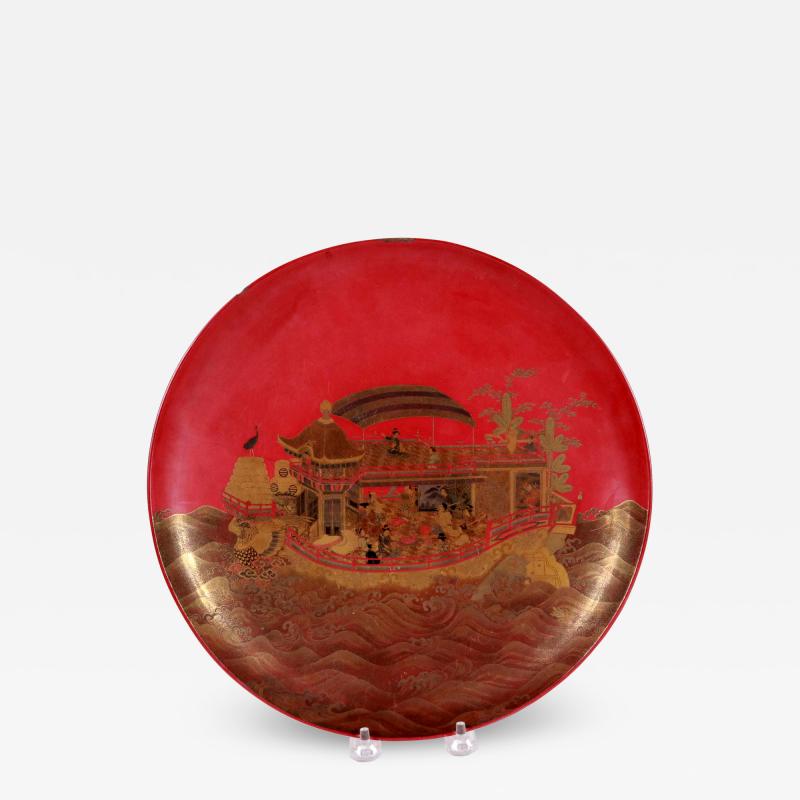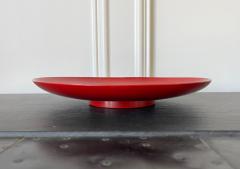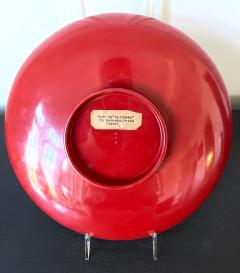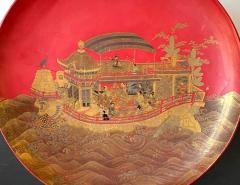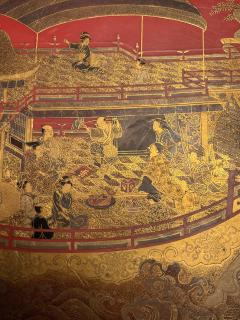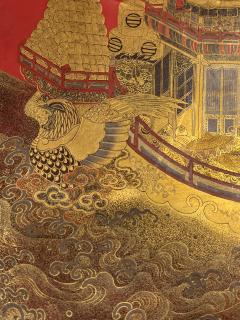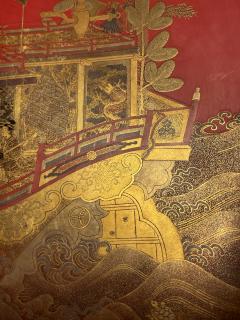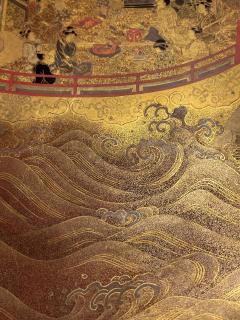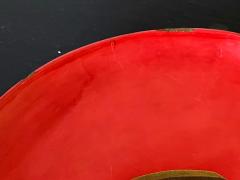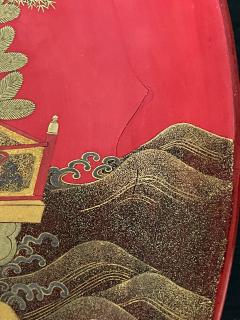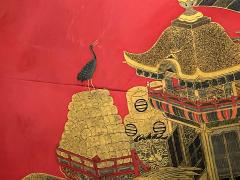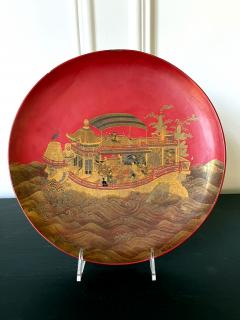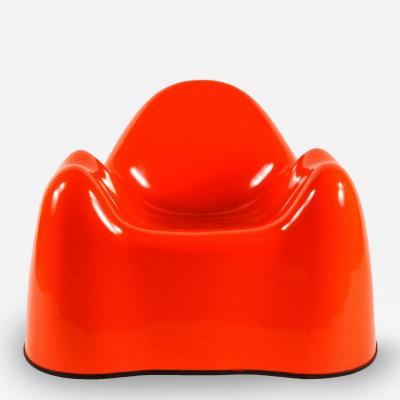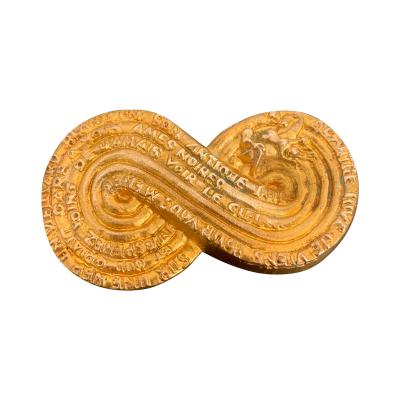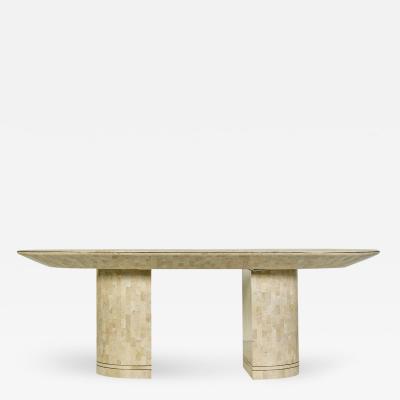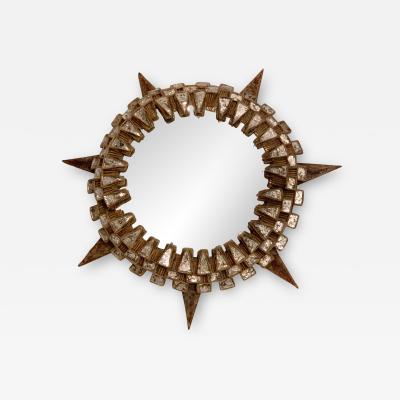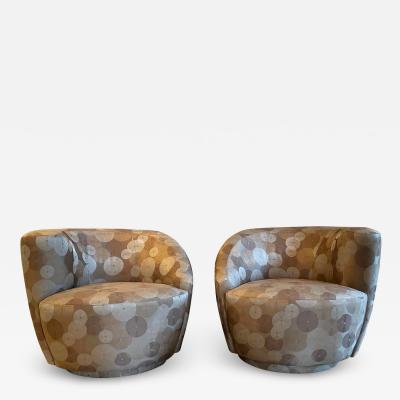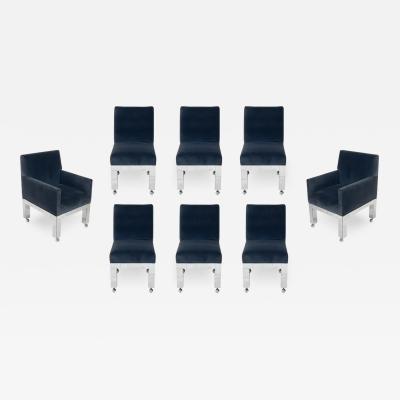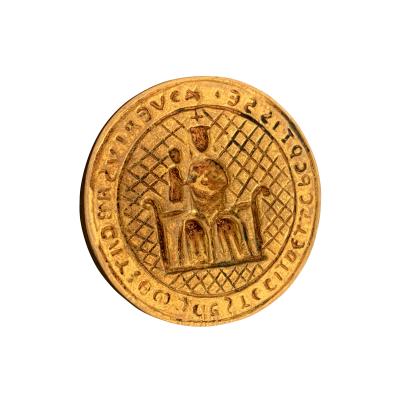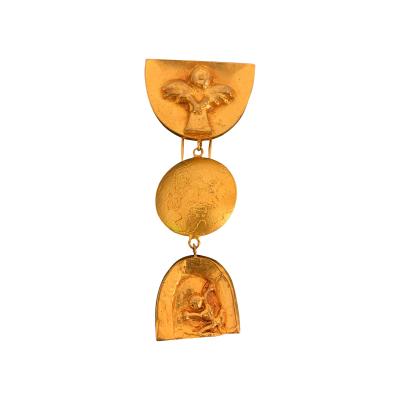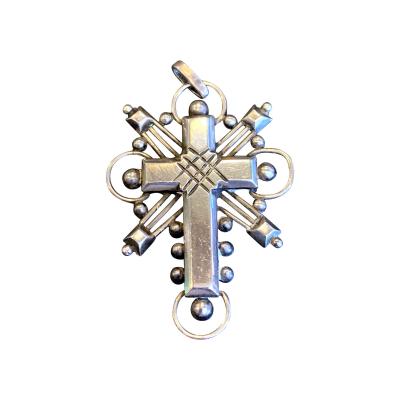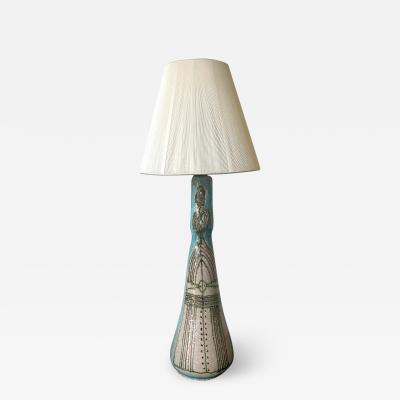Large Japanese Lacquer Plate with Elaborate Maki-e Design by Kajikawa
-
Description
A large circular plate with a short stem base in vermillion lacquer color. The surface was decorated with a stunning maki-e picture that depicts an elaborate boat sailing on the waves hosting a lively gathering. The boat appears to be a party vessel and it features a phoenix bow, a two-story pavilion docks, each with characters gathered and being entertained. The details are astounding, from the ornamental details of the dragon panels, to the plants on the back of the hull, to the attires and even expression of the attendees; They were all executed with a painstaking and masterful quality. The waves on the ocean were outlined with gold lines, filled with gradient of gold powder with togidashi technique and further contrasted with silver powder, rending them a superb visual imagery. The overall composition is regal.
The base of the compote was signed in gold character "Made by Kajikawa". Kajikawa clan was one of the most famous lacquer artisanal families established in the 17th century. Many well known members over the generations produced lacquer art in a wide range of formats, but two third of the work were signed only with the family name such as this one. It is therefore not possible to pinpoint the exact author of this piece. Based on the style, we believe that this piece was dated to mid-late 19th century, end of Edo to beginning of Meiji period. It was not made to be used but as an pure decorative piece, likely for the luxury export market. An old paper stick remains but we don't believe it was made in the 17th century. -
More Information
Origin: Japan Period: 19th Century Materials: lacquered wood Condition: Fair. Wear consistent with age and use. Minor losses. Two chips on the rim, a couple of stable crackles on the lacquer surface, the vermilion color on the facade has slightly faded compared to the back and shows a slight variation due to the exposure to light. Creation Date: 19th century Styles / Movements: Bespoke, Asian, Traditional Patterns: Asian/Oriental, Handmade Incollect Reference #: 437085 -
Dimensions
H. 2 in; Diam. 12 in; H. 5.08 cm; Diam. 30.48 cm;
Message from Seller:
Tishu, based in Atlanta, GA, offers a diverse collection ranging from Neolithic art to 20th-century collectibles, with a focus on Mid-century design, Japanese and Korean art, Asian textiles, and Contemporary Aboriginal art. Driven by a passion for timeless beauty, the gallery is open by appointment only and offers works that span 5,000 years of history. Reach them at 305-400-0561 or tishu@tishugallery.com.







